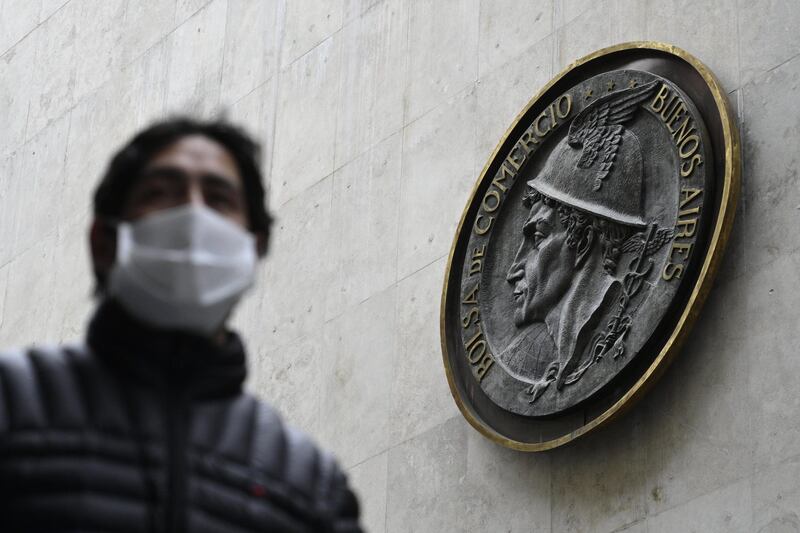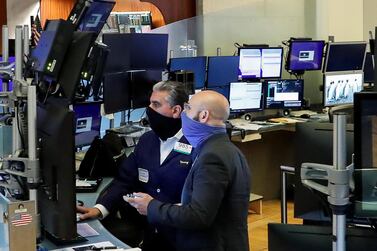Investors looking to generate income from their investments have had a desperate time since the financial crisis sent interest rates crashing to record lows, and the pandemic has made a bad situation worse.
Savers now consider themselves lucky to get 1 per cent on their cash, while generating income from government bonds is just as tricky. At the time of writing, 10-year US Treasury bonds were yielding just 0.69 per cent.
In many countries, interest rates and bond yields have fallen into negative territory, so you actually pay institutions to look after your money. At one point last year, an incredible $17 trillion (Dh62.4tn) of global bonds traded at negative yields.
The worldwide search for yield has been despairing at times but UAE investors can still generate income of between 4 and 7 per cent a year from an asset class the professionals call emerging market debt.
That name may be a little misleading and scare many private investors away. Debt is a bad thing, isn't it? Emerging market debt sounds particularly scary.
A better name would be emerging market bonds.
These are issued by governments and companies to raise money, in the same way as in the US and other developed markets. Many bonds are even issued in US dollars, although increasingly they use local currencies.
They pay fixed income for a pre-agreed period, just like bonds issued in the US and Europe, after which your capital should be returned in full.
Perhaps the biggest difference is that emerging market bonds are higher risk, but also potentially more rewarding.
Michael Bolliger, who heads the emerging markets asset allocation team at UBS Wealth Management, says emerging market sovereign bonds typically yield about 5 per cent, with corporate bonds priced in US dollars paying income of around 4.3 per cent. "This is more than 400 basis points above US Treasuries, making them attractive to yield-starved investors in search of higher income.”
The risk when investing in any bond is that the issuer will run into financial problems and default, putting your original capital at risk.
The danger is higher in emerging markets, as it is when investing in shares, Mr Bolliger says. This is due to “weaker institutions and policies than developed countries, higher economic volatility, and greater dependency on a single product such as energy exports”.
Rather than buy individual bonds, most private investors will spread their risk by investing in a mutual fund or passive exchange-traded fund (ETF), just as they would with shares, to reduce the damage from a single default.
“Emerging market bonds offer mainly income but some active funds can deliver capital growth as well,” Mr Bolliger says.
Another way to limit risk is to only invest a small proportion of your total portfolio in the sector. Mr Bolliger suggests between 5 and 10 per cent.
“Avoid high-risk concentration and exposure to issuers that do not fit your risk profile,” he says.
Wim Vandenhoeck, senior portfolio manager of global debt at fund manager Invesco, says emerging market debt gives you exposure to countries with higher growth rates than the developed world, which together make up about half of global GDP. “The sector provides consistently high rates of income, particularly in comparison to developed markets, where so much debt has been issued with negative rates in recent years.”
Most investors already have some exposure to emerging market stocks, notably the Bric countries of Brazil, Russia, India and China, but Mr Vandenhoeck says they should consider complementing this with emerging market debt.
It has low correlation with developing market stocks and bonds, giving you an alternative source of return and cushion against volatility when markets underperform. “You also get higher income than on emerging market shares, with less volatility,” Mr Vandenhoeck says.
Yogesh Khairajani, global market strategist at Century Financial, says investors seeking a higher return might consider "frontier debt”, which can yield more than 7 per cent. Just understand the dangers. “Frontier bonds are issued by smaller, riskier countries with less liquid markets, for example Argentina, Bangladesh, Cyprus, Estonia, Nigeria, Tunisia and Ukraine.”
Rob Drijkoningen, co-head of emerging market debt at fund manager Neuberger Berman, names four reasons to include emerging market debt in your portfolio: "Size, diversification, yield and foreign currency appreciation.”
The sector is growing quickly and allows you to broaden your portfolio by diversifying across different countries, currencies, industries, yield curves and credit ratings.
As central bankers slash interest rates to the bone to combat the Covid-19 recession, the higher yields on emerging market bonds look increasingly attractive, he says.
Finally, emerging market currencies may start to strengthen relative to the US dollar, which now looks relatively weak, Mr Drijkoningen says. “If this happens, you could get capital appreciation on top of higher income.”
Emerging market debt has delivered a total average return, including income and growth, of 7 per cent a year since 2003, he says. "That is well ahead of developed-world investment-grade bonds.”
Mr Khairajani says you can invest in the sector through ETFs issued by major providers such as Vanguard, BlackRock’s iShares and SPDR.
He says most funds invest around 50 or 60 per cent of their portfolio into sovereign bonds, typically issued by larger countries such as Russia, Mexico, Brazil, South Africa, Thailand, Malaysia, India and China. “The average duration is eight to 10 years, with a typical yield of between 5 and 7 per cent.”
The funds may also balance this out by exposure to corporate bonds issued by energy and infrastructure companies, he adds.
Despite the higher risks, Mr Khairajani says they have a place in a balanced, diversified portfolio, both for income and growth.
The largest emerging market debt ETF by asset size is iShares JP Morgan USD Emerging Markets Bond ETF, which invests in US dollar-denominated government bonds issued by more than 30 emerging market countries.
More than $16 billion is invested in this fund, which currently offers a 12-month yield of 4.13 per cent, and has delivered a total return of 69 per cent over the last 10 years. Its fees total just 0.39 per cent a year.
As its name suggests, VanEck Vectors JP Morgan Emerging Markets Local Currency Bond ETF invest in government bonds issued in local currencies, including Brazil, Indonesia, Mexico, Thailand, South Africa, Poland, Malaysia and Russia. It offers a 12-month yield of 6.07 per cent, and has a net fee of 0.30 per cent a year.
Mr Khairajani says more aggressive investors willing to take on added risk might consider iShares JP Morgan Emerging Markets High Yield Bond ETF, which invests in US dollar-denominated high yield bonds issued by governments and corporations.
This gives you access to more than 200 bonds with a 12-month yield of 5.81 per cent, and total fees of just 0.50 per cent a year.
Mr Vandenhoeck argues that mutual funds work better than ETFs in this sector. “Fixed-income markets are highly complex and comprise multiple types of debt securities, making it challenging for rules-based investing to provide strong returns. An investment team with deep expertise and experience can identify the highest conviction opportunities.”
Mutual fund managers including Franklin Templeton, Fidelity, BlackRock, Aberdeen, Invesco, Neuberger Berman and Amundi all offer funds.
Emerging market bonds may be riskier, but Mr Bolliger says the dangers may reduce as the world emerges from lockdown. “They may offer additional underlying risks, but investors are well compensated for taking them.”








